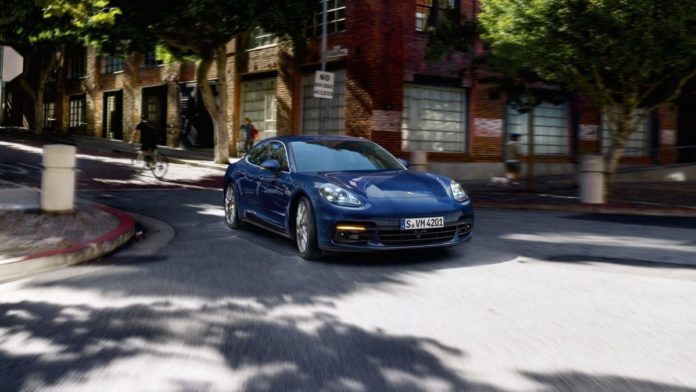The Porsche Panamera represents the combination of two distinct identities: one, a performance beast – quick, nimble and agile; the other, a family sedan – simple, sensible, and utilitarian. As unlikely a match-up as this may have seemed at the time, the concept has stuck, and led to record-setting sales around the world.
2018 was Porsche’s best year ever. The German automaker sold 256,255 vehicles worldwide, more than ever for a single year in the company’s history.
In 2018, Porsche sold 86,031 Macans, 71,458 Cayennes, and 38,443 Panameras. The Panamera saw the highest year-over-year growth, selling 38% more cars in 2018 than had been moved in 2017.
Not bad for cars many within Porsche thought would spell the end of the company as they knew it. It seems the introduction of these “unconventional” Porsches was not the end, but the beginning of a whole new chapter.
Beauty and the Beast
When it first went into production back in 2009, the Porsche Panamera received mixed reviews from brand devotees.
Some felt the 4-door and 4,000 pound full-size luxury car was the natural evolution of the Porsche 989 Concept, which first saw the light of day, in the late 1980s. Others felt the elongated Panamera and Cayenne SUV, were radical departures for a company which was founded in 1931, and has nearly always been synonymous with high performance, amazing handling sports cars.
While the Stuttgart, Germany based automaker had initially planned to produce only 20,000 Panameras per year, the car ended up becoming wildly popular, and for all the right reasons. The Panamera combines absolutely brutal performance with the sophistication and comfort of a luxury touring car.
With more than 235,000 cars already delivered around the world, the Panamera, (like the Macan, which continues to be Porsche’s most popular car) has ushered in a new era of German automotive mastery. For many consumers, the combination of high end sports performance with utility features well suited for daily driving and the family life have helped invigorate Porsche.
Lessons and profits earned from Porsches like the Panamera have been instrumental in supporting research and development in the years since it first went into production.
“As a technology platform for innovations that were later transferred to other models, the Panamera has played a significant role in shaping the past ten years of the brand’s history,” explains Michael Steiner, then first Vice President of the product line, today Member of the Executive Board Research and Development.
“With its high-performance hybrid variants, it is now above all a trailblazer for electromobility at Porsche.” Produced exclusively at the company’s production facility in Leipzig, the current, second generation Panamera is available in three unique body variants.
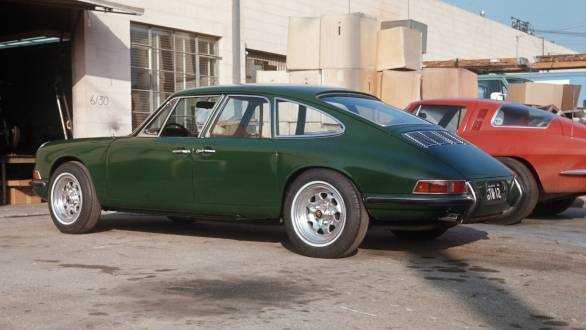
As far back as the 1950s, Porsche had been toying with the idea of creating a larger vehicle which would be able to comfortably fit four passengers. The Porsche Type 530 was the first concept to see the light of day, though it would take another several decades before a similar car would have a chance to go into commercial production.
The Porsche Type 530 featured an extended wheelbase, larger doors and a raised roof in the rear of the car.
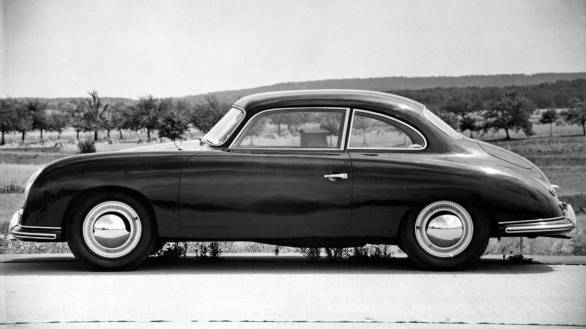
By the 1980s engineers at Porsche were at it again, this time trying to extend the beloved Porsche 911. The result of that experimentation – lengthened versions of the Porsche 928 – intrigued but failed to receive the support they needed to become a full fledged production reality.
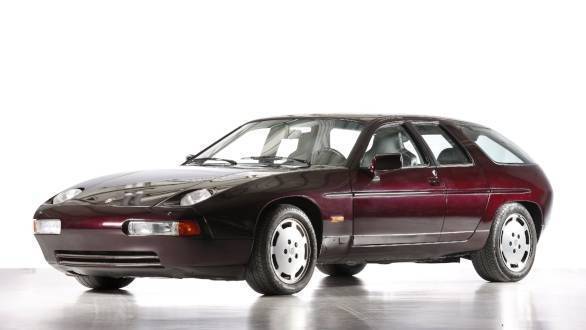
Rumor has it, Ferry Porsche himself was so keen on the extended 928 concept, he made one of them his personal car in the later years of his life.
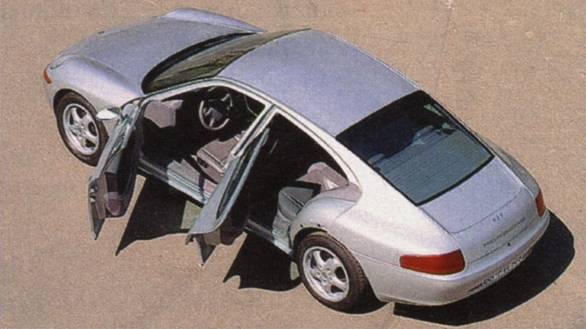
Finally, in 1988, Porsche unveiled the 989 concept which continued to build on the same concept that had eluded the company for several decades. The 989 was a four door coupe, which offered two full seats in the back seat and a powerful V8 front engine.
Despite receiving tremendous hype and praise from across the automotive landscape, the Porsche 989 concept was still deemed more of an exercise in creativity than an evolution of brand aesthetics. Design elements from the concept did however make their way into the Porsche 911 of the 993 generation.
Unfortunately, when sales lagged, development was ceased in 1992.
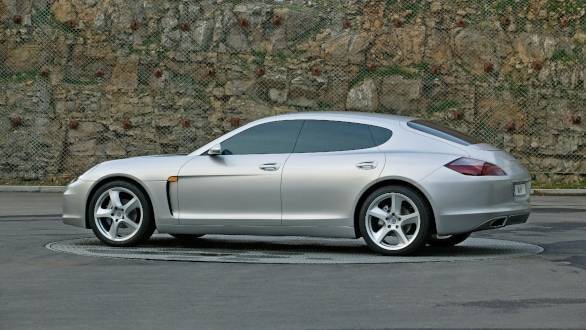
Lights, Camera, Action
At the dawn of the new millennium, Porsche began to analyze the changing market dynamics and again began to consider releasing a “four door, grand touring hatchback saloon”. A car that could help expand the global perception of Porsche and generate new levels of interest and sales performance.
Still, not everyone in Porsche leadership agreed with this new direction for the brand. Chairman of the Executive Board at the time, Wendelin Wiedeking was a staunch opponent of releasing the Panamera. For the car to ever see the light of day, it was essential that outstanding driving dynamics, generous passenger and cargo space, and a quintessentially Porsche appearance were combined, ensuring the car fit the long established identity of the Baden Wuerttemberg based automaker.
Michael Mauer, Vice President Style Porsche explains: “We wanted to build a four-seater sports car with a fast roofline, large tailgate and hatchback.”
As the Panamera came into being, there were three competing design concepts: “Mirage”, “Meteor” and “Phantom”. In the end, the muscular Mirage is the closest to the final production release of the car that became known as the Panamera though elements of all three concepts were included.
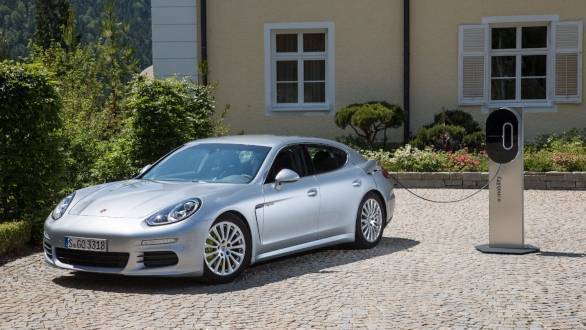
In the end, the name Panamera was chosen as a nod to the Mexican endurance race known as “Carrera Panamericana”.The Panamera G1 made its debut on April 19th, 2009 at the World Financial Center in Shanghai, China.
The Panamera became known for the combination of sportiness and comfort it offered, which made it very different than any other car on the market at the time.
The Panamera Turbo also introduced air suspension with additional air volume on demand, as well as an adjustable, multi-dimensionally extendable rear spoiler.
The Gran Turismo also set the course for all other Porsche model lines with its new infotainment system and operating concept.
As the following for the car grew, so did the potential customization options. The engine range would cover power outputs from 250 to 680 HP with gasoline, diesel, and hybrid options in addition to rear and all-wheel drive variations.
In the beginning, the naturally aspirated V6 and V8 engines were available with a six-speed manual transmission though most customers chose the seven-speed Porsche dual clutch transmission PDK. Diesel and hybrid drives were available in combination with an eight-stage automatic transmission.
The World’s First Hybrid Supercar
In 2011, when the first hybrid Panamera hit the pavement, it was a revolutionary moment in automotive history. Many didn’t think it was possible, and somehow the German automaker achieved it: a truly impressive and supremely powerful hybrid car that eco-conscious consumers could be proud of.
The first full hybrid on the luxury market, the Panamera S Hybrid was the most most fuel efficient Porsche of all time despite being able
As the first parallel full hybrid in the luxury class, the Panamera S Hybrid was the most economical Porsche to date despite a power output of 380 HP. Within two years the world’s first plug-in hybrid, the Panamera S E-Hybrid, was able to push 416 HP and manage an all electric range of 22.5 miles.
For the G2, second generation Panamera which debuted in 2016, Porsche embraced the electric boosting performance in all variants of the car. The strategy involved combining the technology developed in the 918 Spyder Supercar and adapting it to allow for extreme efficiency.
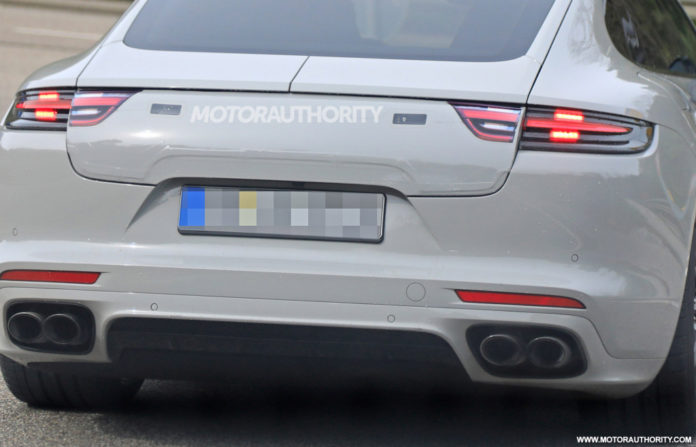
The Future is Bright
As of May 2019, the first spy shots of the forthcoming 2021 Porsche Panamera, due in 2020 have began to appear across the automotive blogosphere. One of the things enthusiasts noticed right off the bat is changes to the look of the car from behind.
Clearly visible on all pictures of the 2021 Panamera prototype is a panel which seems to be covering a center strip joining individual tail light clusters. A design similar to the latest versions of the Porsche Cayenne and Macan SUVs.
At this time, the 2021 Porsche Panamera is in its design stage and is likely to see many more changes and updates as we move closer to its release next year. One rumor is that this updated Panamera could feature a 48-volt mild-hybrid system along with electric compressors.
This is a more powerful starter motor that will aid the Panamera’s engine during high loads and help recover energy typically lost from braking and coasting. An electric compressor helps build boost pressure in force-fed engines before revs rise and a conventional supercharger or turbocharger takes over.
One thing is certain about the evolution of the Panamera: for automobile fanatics around the world, it will be exciting to watch what happens next for this car which so beautifully combines power and performance with space and utility.
Sources:Motor Authority, Porsche
